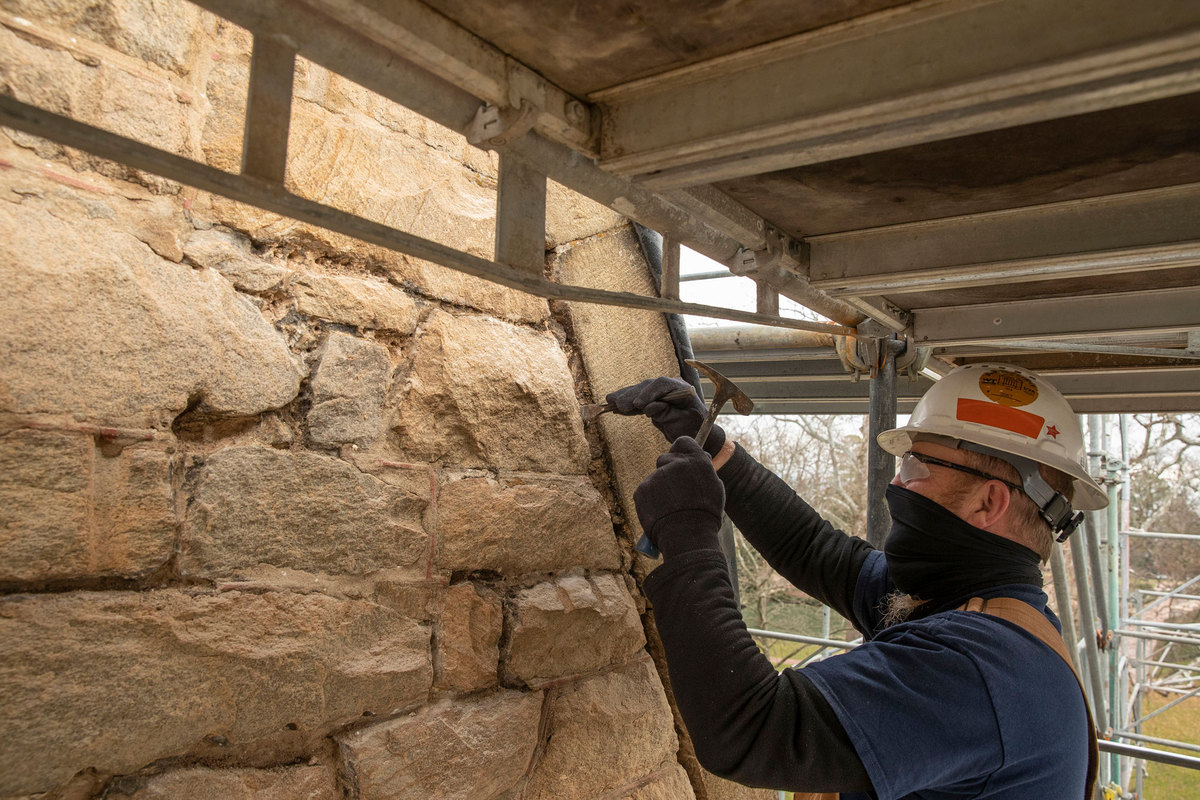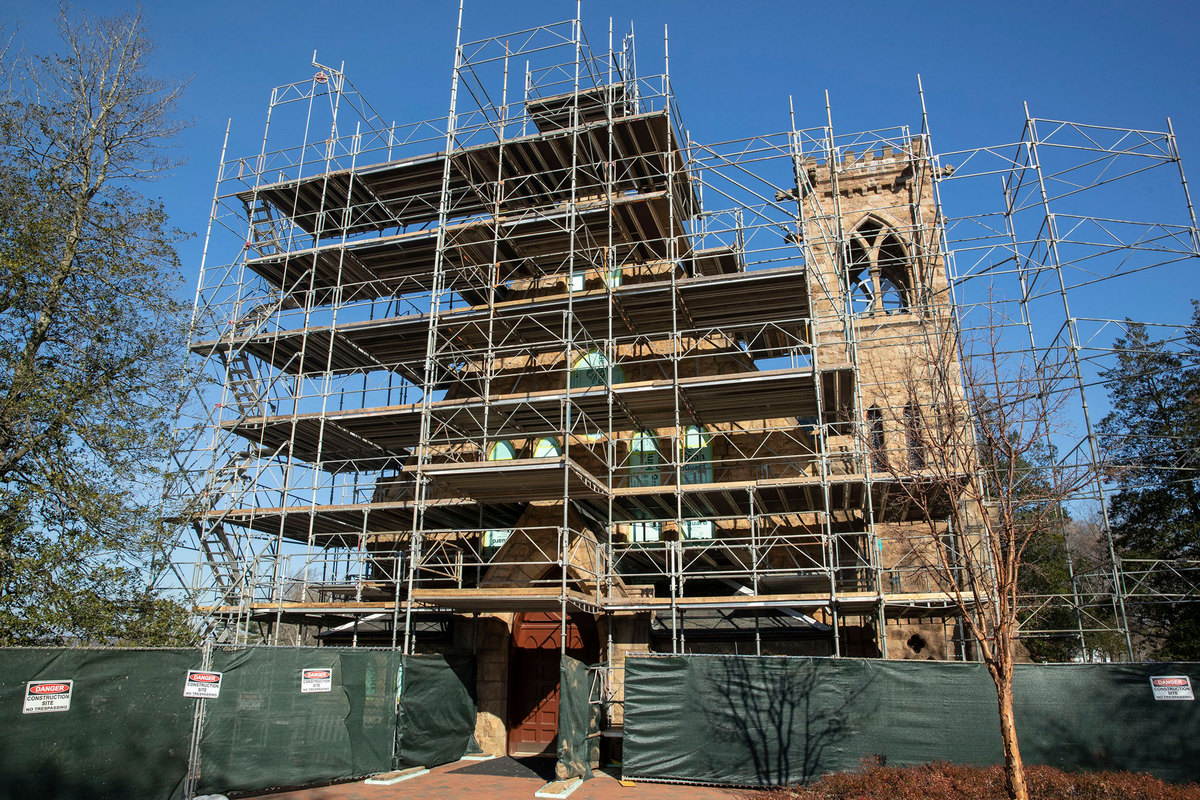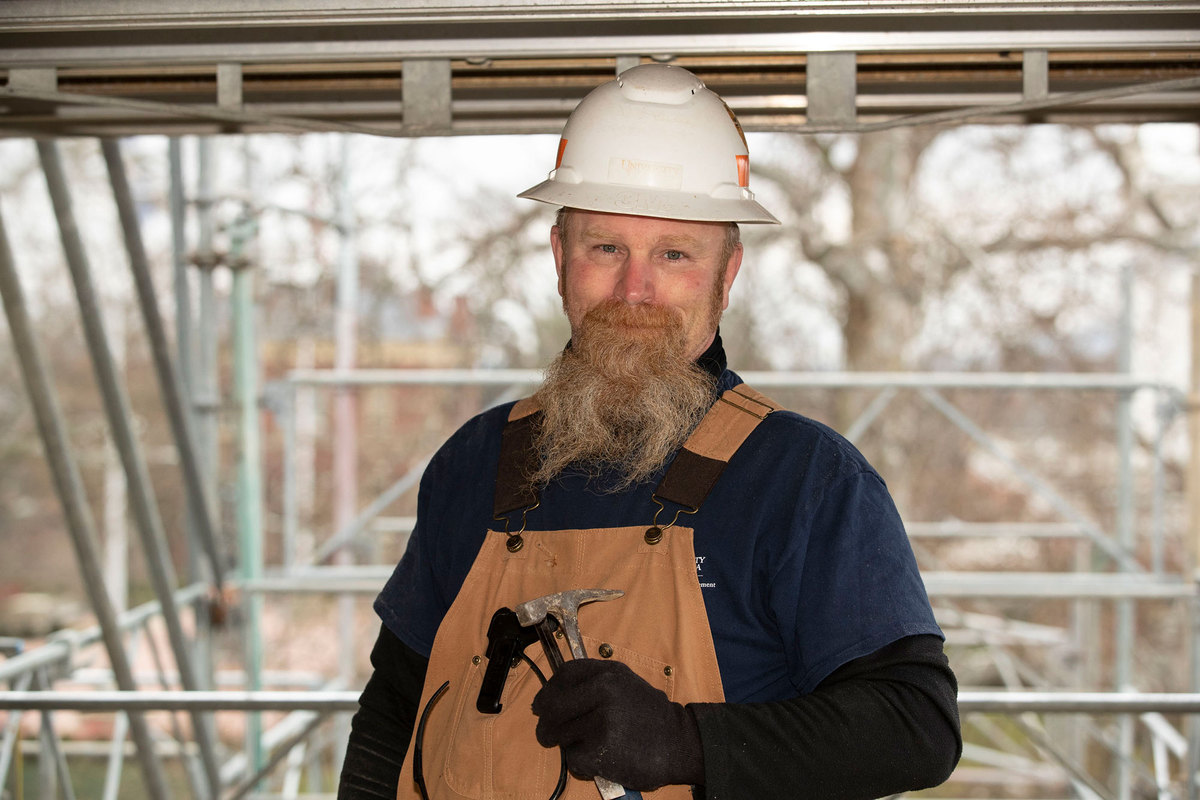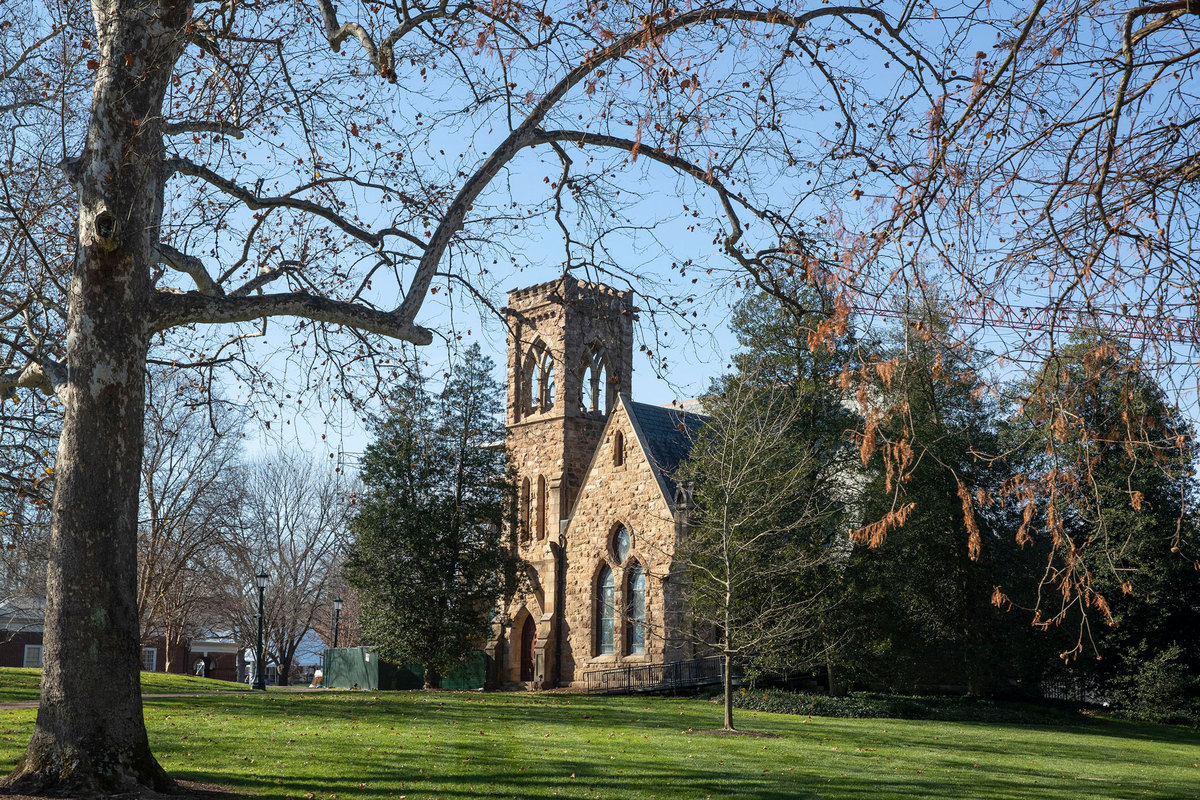The University of Virginia Chapel was swathed in scaffolding for the new year.
Facilities Management’s historic masons, specializing in historic preservation, have been working on repointing the chapel, replacing or restoring the mortar between the sandstone blocks in a combination of repair and regular maintenance.
“Some of the mortars need to be repaired because there is deterioration taking place,” said Wayne Mays, assistant director of trades for Facilities Management. “We have seen some water damage inside the chapel and we are repairing some of the causes of that. There was some flashing that was in disrepair and we have to repair or stabilize the stone and some of the mortar to keep water from infiltrating the chapel.”
The masons are replacing some of the more modern mortar between the sandstone blocks.
“All the original mortar is a lime mortar, just like in the [Thomas] Jefferson[-designed] buildings,” Mays said. “There were some repairs over the years where cement mortar was installed. Our masons have removed those cement mortars.

Dennis Edwards, supervisor of historic masonry, carefully chisels out some of the cement mortar between the sandstone blocks.
“Cement mortars could cause further harm in a couple of different ways. Cements are non-permeable, meaning moisture can pass through. Cement acts as a dam and prevents moisture from passing through. Moisture can get trapped behind the cement mortars and actually deteriorate the softer lime mortar behind it. Lime mortars are permeable. They breathe the way you and I do and that is how the building works for a masonry structure.”
Aside from damaging the lime mortar, the cement mortar traps water that can freeze, pushing the mortar and the stones farther apart. Moisture entrapment and the existence of cement materials can also create soluble salts.
“Some people recognize soluble salts as white snow on the surface,” Mays said. “Soluble salts can grow into salt crystals that grow within the wall, like stalactites, and start pushing the masonry apart.”
The mortar joints between the sandstones also carry a center bead that raises up from the mortar about a quarter-inch and that bead carries a line of red color.
“Think of it as pointing it twice,” Mays said. “Point it with your standard mortar color, and then over the top of that, in the center of the joint, you are pointing it again.”
Dennis Edwards, supervisor of historic masonry, has been researching the history of the chapel’s masonry, the first repointing of which was performed about 10 years after the chapel was built.
“We are not sure what issues they were having, but they did come up with $50 for a repointing campaign, around 1904 and 1905,” Edwards said.












